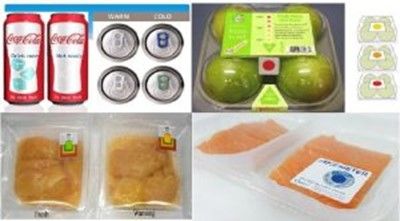Role of Advanced Packaging in Food Safety and Marketing
Introduction
In the growing challenges of modern society, the packaging technology of food products is going through continuous evolution. The awareness regarding food safety issues is increasing among consumers day by day. Additionally, the issue of sustainable food products and packaging materials has become critical for consumers and business organizations. Advanced packaging enables us to develop safe food products that retain high quality and have a longer shelf life.
Active food packaging and intelligent packaging are the most innovative among advanced food packaging. In addition, edible food packaging and sustainable packaging also fall under the umbrella of advanced food packaging.
Types of Advanced Food Packaging:
There are several advanced food packaging techniques. The research and innovation in the field are continually adding to that number. In this article, we will discuss the most common ones and try to address what impact these packaging techniques play in food safety and marketing.
1. Active Food Packaging:
In this, a packaging system has added one or more constituents either incorporated into the packaging film or added/introduced into the headspace to perform a specific function, such as maintaining the product's quality attributes, sensory profile, and food safety.
Specifically, Active packaging is used to perform one or more of the following functions:
- Elimination of an undesirable component: Oxygen and ethylene activity can deteriorate food post-harvest or packaging conditions. So, it’s very important to eliminate those or minimize their activity. For this purpose, oxygen and ethylene scavengers are commonly used in meats, cheese, bread, and food packaging.
- Prevention of microbial growth: For example, Carbon dioxide (CO2) is often introduced in a package to retard the growth of aerobic microorganisms.
- Introducing a favorable/desired component: CO2 emitters are often used in coffee, fresh meat, and fish packaging.
- Enhancing and modifying the physical condition of the food, for example, hygroscopic compounds. Moisture absorbers are often used in snack foods, cereals, and poultry products.
All of the above functions help in extending the shelf life of the product. These also play a major role in maintaining food safe by reducing microbial growth. Moreover, advanced packaging helps in better marketing of the food product by building consumers’ confidence in the product.
2. Intelligent packaging:
It can sense, detect, and trace the changes within the package. Then it can show these changes on indicators/tags on the packaging film. This enables the customer to make an informed decision regarding the food freshness, safety, and integrity of the product. We can divide these intelligent systems into three categories:
- Indicators: Freshness indicators, time-temperature indicators, and integrity indicators
- Sensors: Biosensors and gas sensors
- Radiofrequency identification system (RFID): These are used to identify, control and manage the goods through the supply chain

3. Edible food coating:
- Polysaccharides (gums, starch, and their derivatives)
- Proteins (gluten, gelatin)
- Waxes and lipids
4. Sustainable packaging:
Role of Advanced Food Packaging
Advanced packaging helps in protecting the food product from external factors like heat, contamination, physical damage, microbial invasion, and much more. Proper handling of advanced food packaging even saves the product from internal factors like oxygen, ethylene, and so on.
Advanced food packaging ensures that the food product you are consuming is as safe as possible. With the continuous rise in ready-to-eat food commodities, it is becoming more and more crucial for food-producing organizations to use advanced food packaging, to ensure food authenticity, integrity and suitability. Following are some reasons why advanced packaging is so important for maintaining food safety:
1. Protection from contamination:
2. Improving product’s shelf life:
3. Maintains the freshness of the food items:

4. Preventing food tampering and food fraud:
In addition, this system includes the use of special food packaging membranes, printing features, graphics, and breakaway closures that change in response to tampering, thus indicating deliberate tampering and providing us with an assurance that the package is intact and safe to use.
Role of competent authorities like FDA in Advanced Food Packaging and Food Safety:
In addition, FDA also maintains the databases, educational information, and listings that relate to ingredients in the food. In addition, the food processors can use additives, allergens, Generally Recognised as Safe (GRAS), and color substances in the advanced food packaging, food contact surfaces, or in the product itself.
Role of Advanced Food Packaging in Product Marketing
Apart from this, the appropriate color, vivid picture, package that is easy to open/handle/dose/dispose and package shape all contribute towards delivering a happy and content feeling. Furthermore, all these factors, when combined help the product catch consumers’ attention. This helps in promoting the product in the competitive market (Raheem et al., 2014).
There are a few advantages that advanced packaging has over conventional packaging. For instance, a consumer can check the product with the naked eye with the help of integrated systems in advanced packaging.
As a result, it can continuously monitor the package's internal conditions and provide the customer with food safety information. It can serve as a warning about a potential problem and detect mishaps during transportation. Advanced packaging allows customers to make informed purchasing decisions. For example, if a customer is traveling and needs a chilled beverage on the go, the temperature sensors will inform the customer about the temperature of the can that whether it is cold enough or not. As a result, it benefits customers and increases sales (Yan et al., 2022).
Recent Developments on the Role of Packaging in Product Marketing
Conclusion:
Latest From Food Surety Blog
Enrol in Our
E-learning Courses
Enrol in Our
Virtual Classroom Courses
Check Out Our
Free Resources

